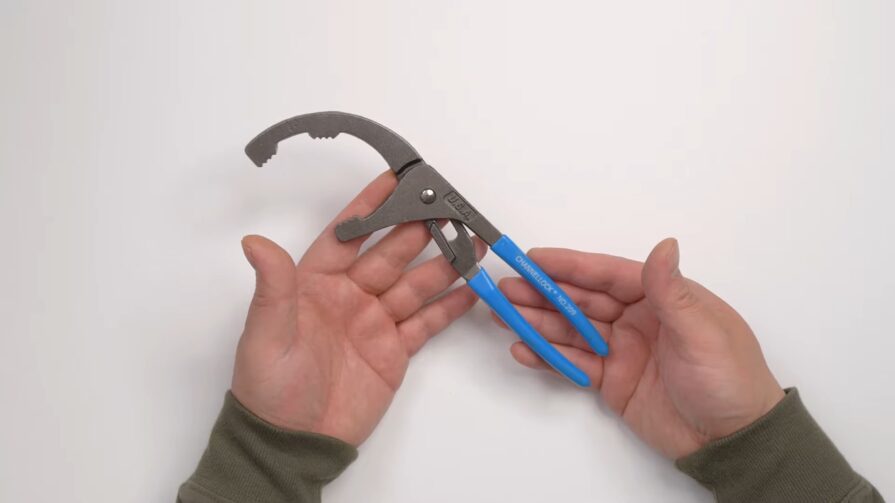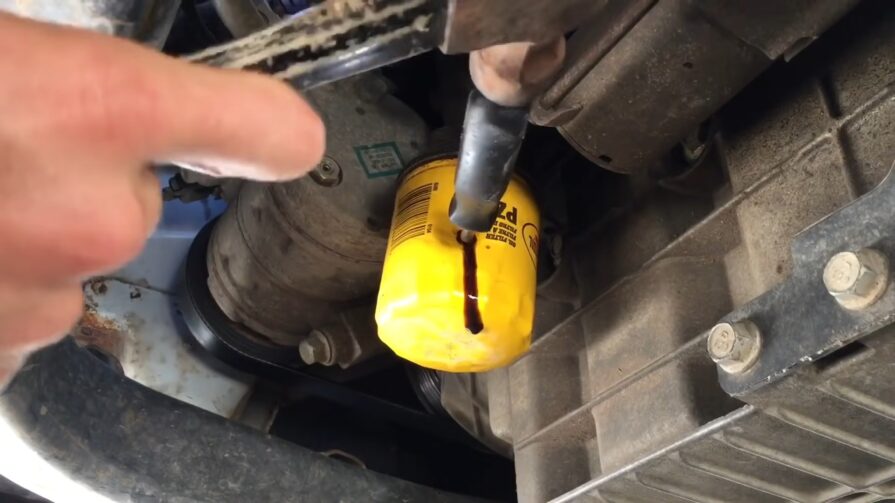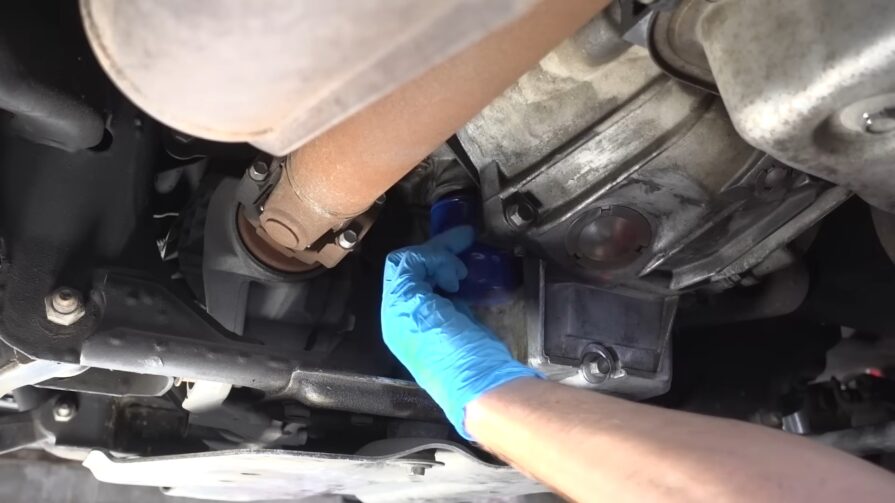December 20, 2023
Sometimes, you might find yourself needing to remove an oil filter without a wrench. This could be due to the expense of specialized tools, a damaged or lost wrench, or an incompatible wrench for your vehicle’s filter. Knowing alternative methods can save time and money, especially in urgent situations.
What You Need
Before you start, gather the necessary tools and materials:
- Safety Gear: Wear safety goggles and gloves to protect yourself from oil spills and any potential splatters.
- Oil Drain Pan: Place a drain pan beneath the oil filter to catch any oil that may leak out.
- Rags or Towels: Keep some rags or towels handy to wipe up spills and keep your hands clean.
- Oil Filter Pliers: While we’re discussing methods without a wrench, filter pliers are an exception. They provide a strong grip and are a valuable tool for removing filters.
Using Oil Filter Pliers

When it comes to removing an oil filter without a wrench, oil filter pliers are your best friend. These specialized pliers are designed to provide a firm grip on the filter, making it easier to turn and remove. Here’s how to use them:
- Identify the oil filter’s location under your vehicle. It typically looks like a cylindrical metal or plastic canister.
- Slide the jaws of the oil filter pliers around the filter. Make sure they’re securely gripping the filter without slipping.
- Apply steady pressure on the pliers, turning them counterclockwise. The filter should start to loosen. If it’s very tight, you may need to use more force, but be cautious not to damage the filter housing.
- Once the filter is loose enough, you should be able to remove it by hand. Twist it counterclockwise until it’s completely off.
- Be sure to properly dispose of the old filter in an environmentally friendly manner. Many auto parts stores accept used oil filters for recycling.
Using the Screwdriver and Hammer Method

For those who don’t have access to oil filter pliers or prefer a more unconventional approach, the screwdriver and hammer method can be a viable alternative. Here’s how to do it:
- As with any oil filter removal method, start by identifying the location of the oil filter under your vehicle.
- Grab a flat-head screwdriver and a hammer from your toolbox.
- Carefully position the screwdriver near the top of the oil filter, ensuring it’s at an angle where it can pierce the filter but not damage the engine or other parts. Gently tap the screwdriver into the filter with the hammer. Make a hole big enough to insert the screwdriver.
- Once the screwdriver is securely in the hole, use it as a lever. Apply counterclockwise force by pushing the screwdriver handle toward the back of the vehicle. This should begin to turn the filter.
- As the filter starts to turn, you should be able to remove it by hand. Continue turning it counterclockwise until it comes off completely.
- Just as with the oil filter pliers method, be sure to properly dispose of the old filter in an environmentally responsible manner.
When All Else Fails – Call for Help
If you find that the oil filter is exceptionally tight, you’ve attempted both methods outlined in this guide, and the filter still won’t budge, it may be time to seek professional assistance. An auto mechanic has the experience and tools needed to tackle stubborn oil filters without causing any damage to your vehicle.
A Few Tips to Remember

Consider Oil Filter Quality
When installing a new oil filter, always use a high-quality filter from a reputable brand. This ensures proper filtration and prevents leaks.
Apply Proper Lubrication
Before installing a new oil filter, lightly coat the rubber gasket with a bit of fresh oil. This helps create a tight seal and makes it easier to remove during the next oil change.
Hand Tighten
When installing a new oil filter, hand-tighten it as much as possible. Using a wrench or other tools to overtighten can make it difficult to remove in the future.
FAQs
Can I use regular pliers if I don’t have oil filter pliers?
While regular pliers may work in some cases, they can damage the filter and make removal more challenging. It’s best to use the recommended tools for the job, such as oil filter pliers or the screwdriver and hammer method.
Is it okay to reuse an old oil filter after removing it without a wrench?
It’s not recommended to reuse an old oil filter. The filter may be clogged or damaged, and using it again could compromise your engine’s performance and longevity. Always use a new filter during an oil change.
Can I remove the oil filter when the engine is hot?
It’s safer to remove the oil filter when the engine is cool. Hot oil can cause burns, and the heat can make the filter housing expand, making it more challenging to remove. Allow the engine to cool for a while before attempting to remove the filter.
Are there any specific safety precautions to take when using the screwdriver and hammer method?
Yes, safety is crucial. Wear safety goggles and gloves to protect yourself from oil spills and potential debris. Ensure that the screwdriver is securely in the filter before using it as a lever, and be cautious to avoid damaging other engine components.
How often should I change my oil filter?
It’s generally recommended to change your oil filter every time you change your engine oil. Consult your vehicle’s owner’s manual for specific maintenance intervals, as they may vary depending on your driving habits and the type of oil filter you use.
Can I drive my car without an oil filter?
It’s not advisable to drive your car without an oil filter. The oil filter plays a crucial role in removing contaminants from the engine oil, ensuring smooth engine operation. Driving without one can lead to engine damage and costly repairs. Always replace the oil filter during an oil change.
The Bottom Line
In conclusion, removing an oil filter without a wrench is possible with the right tools and techniques. Whether using oil filter pliers or the screwdriver and hammer method, proper removal is essential for a successful DIY oil change.
Remember to prioritize safety, choose quality filters, and follow these steps to maintain your vehicle’s health and save money in the long run.
